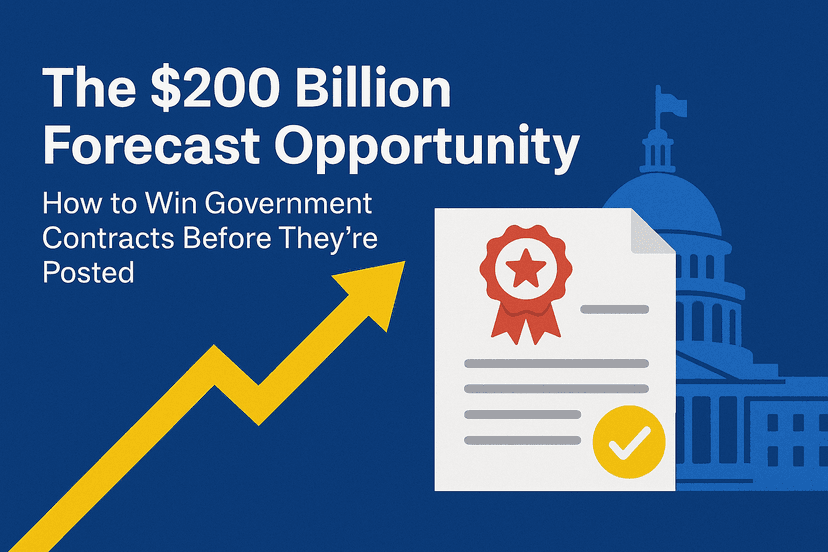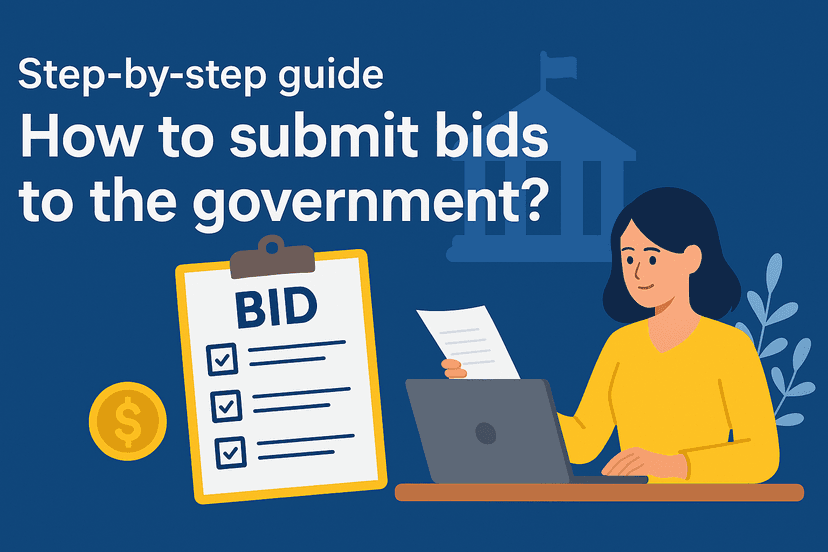Wage Determination in Government Contracting: How to Find Rates and Fringe Benefits on SAM.gov

🎥 Prefer video? Watch the full breakdown here:
A wage determination (WD) is a DOL-issued schedule of minimum rates – including base pay, fringe benefits, and work rules – that contractors must pay workers under covered federal contracts sam.gov. In other words, wage determinations establish the prevailing wage for each job classification in a specific location. These legally binding rates are a critical part of government contracting wages. Every covered solicitation or contract must include the correct wage determination so that bidders know the minimum labor costs in advance dol.gov dol.gov. Failing to comply can lead to withheld payments, underpayment liabilities, or even debarment.
Why Wage Determinations Matter
- Fair Pay & Compliance: Wage determinations ensure that contractors pay workers fair, local prevailing wages and benefits on government projects. They protect workers and set a “floor” for labor costs. By law, covered contracts must use these rates, so contractors must build them into bids and budgets dol.gov dol.gov.
- Legal Requirement: The Federal Acquisition Regulation (FAR) requires that the applicable WD be physically included in bid solicitations and contracts dol.gov. Contractors need this information up front to compute labor costs. For example, the Davis-Bacon/DBRA guidance notes that “contractors need to know the minimum wages they will be required to pay while they develop their cost estimates” dol.gov.
- Budgeting and Bidding: Since wage rates can be higher than the federal minimum wage, knowing the WD is essential for accurate pricing. In government contracting, unexpected wage costs after award can sink profitability. Regularly checking the current WD on SAM.gov is a best practice for budgeting labor correctly.
Legal Framework: SCA and Davis-Bacon Acts
The two main laws governing federal prevailing wages are the Service Contract Act (SCA) and the Davis-Bacon Act (DBA). Each has its own scope, wage schedule, and rules:
-
Service Contract Act (SCA) – Enacted in 1965, the McNamara-O’Hara SCA applies to federal/D.C. contracts primarily for services (maintenance, security, janitorial, clerical, etc.). It covers contracts over $2,500 dol.gov dol.gov. Under the SCA, the DOL issues wage determinations that specify prevailing hourly wages and fringe benefits (such as health insurance, vacation, holiday pay) for each service category in a locality. Contractors and subcontractors must pay their “service employees” at least these rates or the rates in any higher CBA dol.gov dol.gov. (Note: Contracts for construction, alteration, or repair of buildings are exempt from SCA; those fall under Davis-Bacon dol.gov.)
-
Davis-Bacon Act (DBA) – Enacted in 1931 (amended in 1934), the DBA (and related acts) covers federal or federally-assisted construction contracts over $2,000 dol.gov. It requires that “laborers and mechanics” on the job be paid at least the prevailing wage rates listed in the applicable DBA wage determination dol.gov. The DBA WD lists rates for specific construction trades (carpenters, electricians, laborers, etc.) based on local surveys. Like SCA, the DBA WDs include fringe benefits (the “prevailing wage” is the sum of base pay plus any listed fringes) dol.gov. Separate construction-type schedules exist: e.g. building, highway, heavy, and residential construction may each have different WDs for a county dol.gov.
-
Related Acts: Many federal programs tie DBA requirements to their grants/loans (e.g. highway, HUD projects) – these are “Davis-Bacon Related Acts” governed by similar rules dol.gov. Under all these laws, the contractor must include the appropriate WD in the contract and pay at least those rates.
Who Sets and Enforces Wage Determinations
Department of Labor (WHD) – The DOL’s Wage and Hour Division surveys wages and issues wage determinations. It determines the prevailing rates and publishes each WD (with a unique identifier) for use by contracting agencies dol.gov dol.gov. For example, the SCA guidance notes that “the Department of Labor issues SCA wage determinations for federal contracting agencies to incorporate…into covered contracts” dol.gov. Likewise, Davis-Bacon WDs are published on SAM.gov for each county and construction type dol.gov dol.gov.
Contracting Agencies (COs) – Federal and D.C. agencies are responsible for applying the law and including the right WDs. FAR 22.1008 instructs contracting officers to obtain the correct WD on SAM.gov or request one from DOL (via the SF-98/e98 process) acquisition.gov acquisition.gov. The agency remains liable for selecting the correct WD. In practice, the agency amends bids/contracts to reflect any WD updates or corrections. Once a contract is awarded, the government (and the DOL) enforces compliance.
Enforcement: Violations trigger remedies. For example, under both SCA and DBA, contractors must pay back any underpaid wages/fringes, can have contract payments withheld, and may even be debarred dol.gov. Under the DBRA, federal agencies are on the front line of enforcement, with the DOL providing regulatory oversight and investigations dol.gov. DOL may audit payrolls, and employees can file complaints. Bottom line: DOL/WHD sets the rates and ensures workers get them, while agencies and contractors are responsible for using the correct WD and paying those rates.
Accessing Wage Determinations on SAM.gov
The official site for federal wage determinations is SAM.gov (the System for Award Management) at sam.gov/wage-determinations. This free portal lets anyone search for current SCA and DBA wage determinations. The homepage even defines a WD as “a set of wages, fringe benefits, and work rules that [DOL] has ruled to be prevailing for a given labor category in a given locality” sam.gov.
Steps to use SAM.gov wage lookup:
-
Go to SAM.gov → Wage Determinations. You don’t need a login just to search. On the Wage Determinations page sam.gov, you can choose to search by WD number or by category.
-
Know the category: First determine if your contract is service or construction work. If it’s a service contract (maintenance, IT support, etc.), use the Service Contract Act (SCA) search. If it’s construction/renovation work, use the Davis-Bacon Act (DBA) search. (The SAM.gov page clearly separates these two types sam.gov.)
-
Search by WD number (optional): If you already have a WD identifier (e.g. “SCA 2025-0001”), you can enter it directly to go straight to that determination. This is useful if the solicitation or agency gave you the WD.
-
Filter by Location: Wage Determinations are organized by county (or independent city). On SAM.gov, after selecting SCA or DBA, pick the state and county where the work will be performed fsd.gov fsd.gov. (If you only know a city or zip code, first determine its county. The FSD.gov guide suggests tools like USGS or NACo’s county explorer for this purpose fsd.gov.)
-
For SCA (Service contracts): - Filter by Service Contract Act type.
- Select the State and County of performance fsd.gov.
- Answer any additional location questions (such as whether the work was performed in prior years) if prompted fsd.gov. (These help narrow the search to the correct WD if multiple listings exist.)
- You can uncheck “Active Only” to see past/archived WDs too fsd.gov.
- You may also enter keywords (like “cafeteria” or the WD number) to refine the list.
-
For DBA (Construction contracts): - Filter by Davis-Bacon Act type.
-
Review results: SAM.gov will list any matching WDs. Click on a WD to view its details. The wage determination will show a table of job classifications and their hourly wage and fringe benefit rates. For example, an SCA WD might list “Janitor: $17.50 wage, $6.00 health fringe” for Fairfax County, VA, while a DBA WD might list “Carpenter: $30.00 wage, $12.50 fringe” for the same county under “Building”.
-
Save or Follow WDs: SAM.gov allows users to “follow” a wage determination or save search criteria sam.gov. Contractors and prime contractors can use this to get alerts if the WD is updated or modified (for instance, if an Executive Order raises the wage minimum or DOL issues a change).
By following these steps on SAM.gov (the official source), contractors can find the precise wage rates for any covered contract. This SAM.gov wage lookup is authoritative – it’s what contracting officers will use, and the only rates that legally apply to the contract.
Searching Wage Rates by Contract or Location (Step-by-Step)
To find the wage determination for a specific contract, start by identifying coverage and location. Here’s a quick how-to:
- Identify Coverage: Review the work scope. If it’s mostly non-construction (janitorial, IT, guards, etc.), it’s likely covered by SCA and requires an SCA wage determination. If it involves physical construction/repair of buildings or infrastructure, it’s covered by Davis-Bacon. (Sometimes a single contract may involve both services and construction – in that case the construction portion needs a DBA WD and the services portion an SCA WD.)
- Gather Details: Note the state and county (or city) where each type of work will occur. If you only know a city, find its county using an online lookup. Also determine the type of construction (for DBA – e.g. building vs highway) or type of service (for SCA – e.g. building services, food service, clerical).
- Use SAM.gov: Follow the steps in the previous section to set the filters on SAM.gov. For example, to look up service wages for a cleaning contract in Arlington County, VA, choose Service Contract Act → Virginia → Arlington. To look up construction wages for a renovation in Los Angeles, CA, choose Davis-Bacon Act → California → Los Angeles County → [choose Building].
- Review the WD: The resulting wage determination will list all covered job classifications (e.g. Custodial Worker, Secretary, or Plumber, Laborer, etc.) and the required minimum pay and fringe. Ensure your project roles match these classifications.
- Interpret Wage Rates: The listed “Wage” is the required hourly pay. The “Fringe” column is often an additional per-hour benefit credit (or a cash equivalent) you must provide. Your total compensation must meet or exceed Wage+Fringe for each worker.
By systematically searching SAM.gov with the contract’s details, you can pinpoint the exact Davis-Bacon wage rates or Service Contract Act wages that apply. Always double-check that you’ve picked the correct locality and category, since rates can vary widely by county and contract type.
Key Terms and Classifications Contractors Should Know
- Prevailing Wage: The average wage (plus fringe benefits) paid to the majority of workers in a given job classification and area. DOL calculates this and spells it out in each WD. For Davis-Bacon, the prevailing wage includes any listed fringes – it is defined as “the combination of the basic hourly rate and any fringe benefits listed in the wage determination” dol.gov.
- Service Employee vs. Laborer/Mechanic: Under SCA, a service employee is any worker performing covered services (unless they qualify as bona fide executive/admin/professional exempt by FLSA standards) dol.gov. Under DBA, covered workers are “laborers and mechanics” on the construction site. Correctly classifying each worker is crucial – misclassifying a laborer as an exempt manager or vice versa is a common compliance pitfall dol.gov dol.gov.
- Wage Determination Number: Each WD has a unique ID (e.g. “SCA 2025-0001” or “CA20230001”). Knowing it lets you jump directly to that WD on SAM.gov.
- Fringe Benefits: Non-wage compensation listed on the WD (health insurance, retirement, etc.). The contractor must either pay this amount in benefits or include it in cash wages. For example, an SCA WD might show "$5.00 Health & Welfare", meaning you must provide at least that value for health benefits. (Under SCA, typical fringes include health & welfare, vacation, and holiday benefits dol.gov.)
- Construction Types (DBA): General Wage Determinations (GWDs) classify work as Building, Highway, Heavy, etc. Make sure you select the correct type – building and heavy are different wage schedules, as are highway and residential dol.gov.
- SCA Directory of Occupations: The SCA uses an official directory (DOL’s SCA Directory, 5th Edition) to define service occupations. If a job isn’t in the WD, contracting agencies use a conformance procedure (SF-1444 form) to determine the rate for that job dol.gov. Contractors should be aware of this process if they have unusual roles not listed in the SCA WD.
- Executive Orders: Separate from WDs, some EOs set higher minimum wages on federal contracts. For example, EO 14026 (Jan 2022) raised the federal contractor minimum to $17.75/hr for covered contracts sam.gov. (This EO has since been rescinded, but future EOs or legislation could change the floor wage, so stay alert.)
Understanding these terms will help you interpret any wage determination correctly and ensure your payroll complies with its requirements.
Common Compliance Pitfalls
Contractors often stumble on wage determination rules in these ways:
- Misclassifying Workers: Labeling an employee under the wrong classification (or as exempt) can lead to underpayment. For example, calling a security guard an “employee exempts under FLSA” improperly, or assigning a carpenter’s work to a generic laborer rate. The DOL notes that misclassification of workers is a top compliance issue dol.gov dol.gov.
- Not Paying Full Wages and Fringes: Failing to pay the listed wage or fringe for all hours worked (including overtime) is common. Remember, if a WD shows $20.00 wage + $5.00 fringe for “Electrician,” you must pay at least $25/hr value per hour. The DBA fact sheet warns against “failure to pay full prevailing wage, including fringe benefits, for all hours worked” dol.gov.
- Ignoring Updates: Each WD may be updated (via modifications or new issues). Some contractors use an old rate inadvertently. Always check if the solicitation incorporated the latest WD and include any subsequent modifications that are issued before award. If you start work late, verify that no new WD superseded the one in your contract.
- Poor Recordkeeping: Not keeping accurate payroll records or certified payroll reports can trigger violations. DBA regulations require weekly certified payrolls, and missing hours or misreporting work classifications is flagged by DOL dol.gov. Under SCA, similarly track hours on contract vs. other work.
- Missing Postings: Both SCA and DBA require contractors to post notices at the worksite. For DBA contracts, the DOL poster and the applicable WD must be posted where workers can see them. Under SCA, you must post WH-1313 (“Notice to Employees Working on Government Contracts”) and include WD information. The fact sheets list “failure to post … the applicable wage determination at the work site” as a frequent violation dol.gov dol.gov.
- Fringe Credit Errors: Under SCA, contractors can satisfy fringe obligations with cash payments (a specified amount per hour) or with a bona fide benefit plan. Failing to pay timely fringes, or incorrectly substituting a benefit that isn’t approved, is a pitfall. Also, if you use cash to fulfill fringes, be sure to track it clearly in payroll.
- Conformance Mistakes: For SCA, if you have a job not listed on the WD, you must use the DOL conformance procedure (SF-1444) before paying it. Many forget or misunderstand this rule, leading to underpaid unique job titles dol.gov.
In short, diligence is key. Contractors should train HR/payroll staff on wage determination rules and build checks into their processes (e.g. a checklist before issuing pay each week). Overlooking these details can lead to costly investigations or back-pay requirements.
Best Practices for Staying Compliant
- Check Early and Often: Identify the applicable wage determination during bid preparation. Don’t wait until after award. Make WD research part of your proposal cost estimate. Once awarded, revisit the WD to ensure you have the latest version.
- Use SAM.gov Tools: On SAM.gov you can save searches or follow specific wage determinations sam.gov. Use these features to get alerts when a WD you rely on is updated or revised. Also subscribe to the Department of Labor’s wage determination announcements (e.g. via the “Wage Determination Announcements” section on SAM.gov sam.gov).
- Track EO and Policy Changes: Federal policy can alter wage floors. For example, new Executive Orders may increase minimums for certain contracts. Keep up with SAM.gov announcements and DOL news releases (the site’s announcements often note major changes sam.gov).
- Maintain Clear Records: Keep detailed payroll records, time sheets, and benefit plans. File certified payrolls weekly if on a Davis-Bacon job. Document how you calculated wages and fringes for each worker. Good recordkeeping is your best protection in an audit.
- Post Required Notices: As soon as work starts, post the proper DOL posters and the wage determination. Visibly display WH-1321 (Davis-Bacon poster) or WH-1313 (SCA poster) at the job site, along with the WD sheet. This ensures workers know their rights and keeps you in compliance dol.gov dol.gov.
- Review Classifications Regularly: If a contract or work scope changes (e.g. adding new tasks or locations), re-check the WD. Similarly, if a contract runs past a year, determine if a new WD edition or modification should apply. In multi-year contracts subject to annual appropriations, DOL requires implementing rate increases from new WDs in successor years dol.gov.
- Consult Experts When Needed: If you’re unsure which classification to use, or if your project has unusual circumstances (like multiple counties), seek guidance. The federal service directory has Labor Advisors and FAQs (linked on SAM.gov sam.gov) who can clarify SCA or DBA issues.
By embedding these best practices into your contracting processes, you minimize the risk of violations. Treat wage compliance as an integral part of contract management, not an afterthought.
Conclusion
Wage determinations are a fundamental element of government contracting wages. They protect workers and ensure fair competition by locking in prevailing wage rates for public projects. As a contractor, it’s essential to know when SCA or Davis-Bacon applies to your work, and to use the official SAM.gov wage lookup tool to find the exact rates. Always double-check wage determinations before bidding and throughout contract performance. Pay attention to updates – new WDs are issued regularly, and laws or Executive Orders can change required rates. Staying on top of wage determinations not only keeps you legally compliant, it also helps you avoid unexpected costs and delays.
In short: before you bid or start work on a federal contract, make checking the applicable wage determination part of your routine. It’s one of the smartest ways to protect your business and your workforce while securing profitable, compliant contract performance.
Sources: Definitions and requirements are drawn from the U.S. Department of Labor and FAR guidance sam.gov dol.gov dol.gov dol.gov dol.gov dol.gov, and from SAM.gov’s official wage determination portal sam.gov fsd.gov. These government sources ensure the information is up-to-date and authoritative.
About Samsearch
Samsearch is an all-in-one platform that streamlines the entire government contracting process. Our solution brings together discovery, management, compliance, and proposal drafting — eliminating the need for multiple disjointed government contracting softwares.













